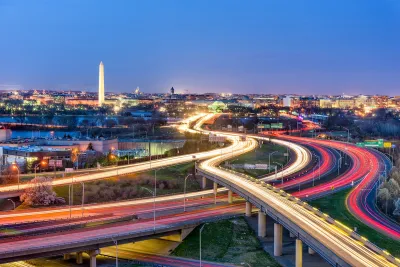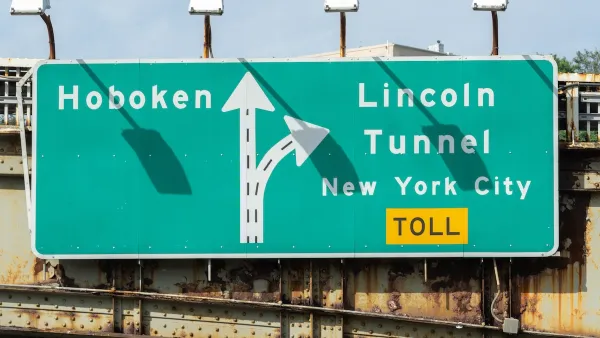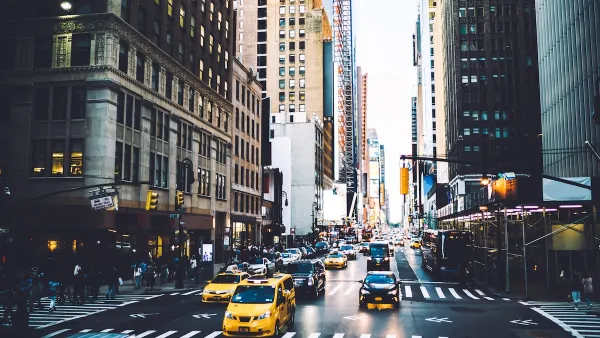How might cordon pricing impact DC drivers and transit users?

In a post in Greater Greater Washington, D. Taylor Reich outlines the results of a study on how road pricing similar to New York City’s new congestion pricing program could work in Washington, D.C.
After building a prototype software program to model changes in transportation behavior, Reich assessed the potential impact of a $5 charge on cars entering one part of the District. According to Reich’s simulation, which includes reinvesting road pricing revenue into public transit, “This particular combination of road pricing and reinvestment would make travel 10% more convenient for lower-income Washingtonians, have a negligible benefit for the average DC resident, and make travel 2% less convenient for the average resident of the greater metro area.”
The model also indicates there would be a 10 percent drop in driving in D.C. and a three percent drop in the metro area. “This reduction in car travel would bring second-order benefits in emissions, road safety, and noise pollution.”
As Reich notes, “Some people would benefit more, while others would lose out—but on the whole, reinvestment in public transportation would mean a major improvement for lower-income people, especially those in more central areas. Moreover, the reduction in car travel would bring other, indirect benefits for the environment and public health.”
FULL STORY: Road pricing could make transportation in the District more equitable

National Parks Layoffs Will Cause Communities to Lose Billions
Thousands of essential park workers were laid off this week, just before the busy spring break season.

Retro-silient?: America’s First “Eco-burb,” The Woodlands Turns 50
A master-planned community north of Houston offers lessons on green infrastructure and resilient design, but falls short of its founder’s lofty affordability and walkability goals.

Delivering for America Plan Will Downgrade Mail Service in at Least 49.5 Percent of Zip Codes
Republican and Democrat lawmakers criticize the plan for its disproportionate negative impact on rural communities.

Test News Post 1
This is a summary

Test News Headline 46
Test for the image on the front page.

Balancing Bombs and Butterflies: How the National Guard Protects a Rare Species
The National Guard at Fort Indiantown Gap uses GIS technology and land management strategies to balance military training with conservation efforts, ensuring the survival of the rare eastern regal fritillary butterfly.
Urban Design for Planners 1: Software Tools
This six-course series explores essential urban design concepts using open source software and equips planners with the tools they need to participate fully in the urban design process.
Planning for Universal Design
Learn the tools for implementing Universal Design in planning regulations.
EMC Planning Group, Inc.
Planetizen
Planetizen
Mpact (formerly Rail~Volution)
Great Falls Development Authority, Inc.
HUDs Office of Policy Development and Research
NYU Wagner Graduate School of Public Service





























